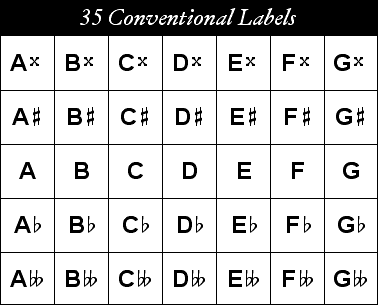
Seven letters combined with five accidentals yields 35 conventional pitch labels, as shown in the table below.

Not all pitch labels are used with equal frequency. The preference for natural pitch labels and the infrequent usage of some possible labels can be explained by taking a quick look at the development of the modern circle of fifths and the practice of enharmonic spelling.
The modern circle of fifths is a closed system of 12 equally spaced tones within an octave, having multiple labels for each pitch. These 12 tones were at one time unequally spaced, and did not allow multiple labels for the same pitch. The figures below show seven white dots and five black dots arranged around a circle. These dots represent the white and black keys which together span one octave on a modern keyboard.
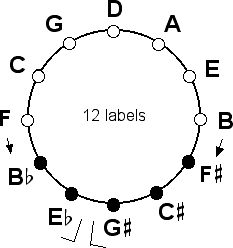
Late 16th century musicians understood one label for one pitch only, and assumed the pitch labels shown above specifically for the 12 keys of a keyboard. Note that the 'black' keys indicate 2 flats and 3 sharps specifically. Many early 17th century keyboards with split 'black' keys allowed 14 discrete pitches, for purposes of transposition. The following figure shows how music employing 14 pitch labels had to be played on keyboards having only 12 keys.
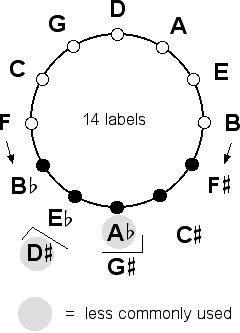
Note that A-flat and D-sharp were less commonly used; in fact, they were considered luxuries. But chromaticism did not stop with 14 pitches. Music of the era sometimes required up to 19 discrete pitches. Addition of further keys, including subsemitones, or keys placed between two 'white' keys, allowed up to 19 pitches to be played on some instruments. The tendancy to include more pitches on the sharp than the flat side places the note A at the center. Musicians playing instruments with fewer keys resorted to the equivalences shown below.
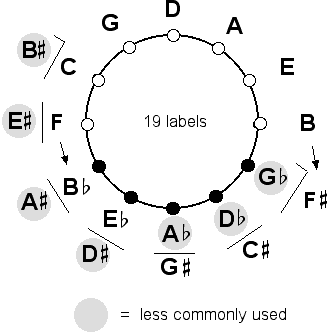
19 was also not the upper limit of historic tonal exploration. Highly chromatic music of the period could be played on rare keyboards allowing up to 31 discrete pitches per octave. The tendancy towards sharps rather than flats is again evident as E serves as a center. Labels spiral around the circle as pitches are added which must be handled by musicians playing keyboards having only 12 keys.
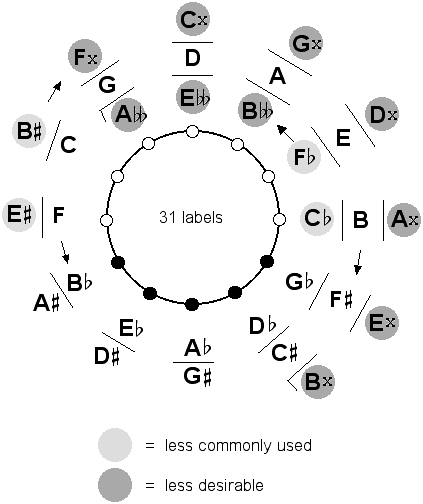
Though double accidentals may have been considered less desirable pitch labels, they came to be used with increasing frequency during the 17th century. Thus the modest circle of twelve became increasingly overburdened by a multiplicity of pitches. This problem led to the development of the modern concept of enharmonicism, which refers to multiple labels applying to the same pitch. The logical completion of the 31 tone system includes 4 additional labels, for a total of 35 pitch labels, which are symmetrical about the note D. This system of 35 enharmonic labels was fully developed by the end of the 17th century.
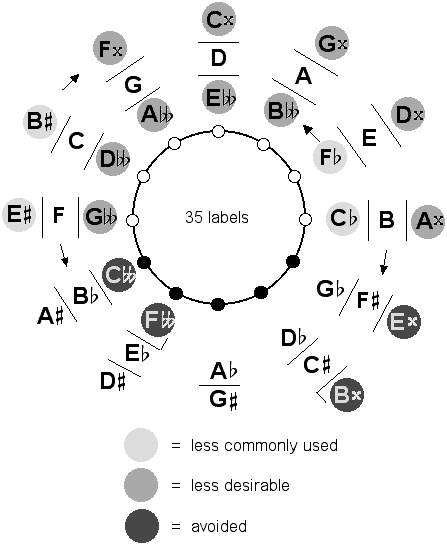
These conventional labeling tendancies are summarized in the following table, which shows 35 modern pitch labels marked according to preference of use.

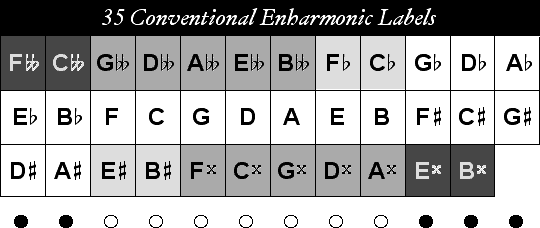
In the table above, the middle row shows the 12 pitch labels initially preferred in the late 16th century. The top and bottom rows show modern enharmonic equivalents for each label in the middle row. The 12 dots illustrate that the 12 columns represent 12 sets of enharmonic labels which may be used for each of the 7 white and 5 black keys on a modern keyboard.
In an extended system, historical precedent still guides choice of pitch labels even though a greater number of pitch labels are available. Conventional preferences are shown in the following table.
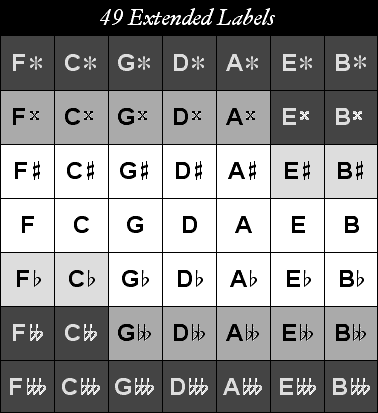

Over one third of extended labels would presumably be avoided in practice due to historic precendent. With a lack of conventional enharmonic labels, avoidance of certain labels is in effect avoidance of certain pitches. To make these pitches as accessible as those pitches with preferred labels, enharmonics must be introduced.